| ||||||||
The
projects - text from the General report 1961 | ||||||||
First project— India Our observations were based on the villages of Pusegaon, Koregaon,Aundh 90miles [144kms] South of Poona and some 200 miles[ 320 kms] inland from Bombay) in Satara District of Maharashtra State, using information previously supplied by Professor D.R.Gadgil, Director of the Gokhale Institute of Politics and Economics, Poona. [Poona is now Pune and Bombay is Mumbai] Our arrival in the District was long expected due to advance publicity on our behalf by the Gokhale Institute and the Commonwealth Relations Office; and with the ready co-operation of Mr.Deshmukh, the District Collector, and Mr.Hinge, Mamlatdar (Chief Government official) in Koregaon, we established ourselves in the Government Inspection Bungalows in Koregaon and Aundh for ten weeks. In initial interviews with the District Agricultural Officer and other District Officers we gained a general picture of the economic situation of the District, and learned of the programmes - in progress or planned - for more rapid development. These covered such fields as improvements in crops, land management, and farming methods; completion of land redistribution, consolidation of holdings,and the spreading of various kinds ofco-operatives. We later saw a number of farming systems, two of the most interesting being a private farm at Aundh that served as an agricultural demonstration centre for the area, and a co-operative village group around Devapur organised by the Dorab Tata Trust.
Mr.Joglekar, Research Assistant of the Gokhale Institute in charge of an economic re-survey of Pusegaon, gave us much information, and more important, helped greatly in the interpretation of what we saw. To form a conception of the District's future, we visited the huge Koyna Hydro Electric Project - scheduled to commence supply in October 1961- which it is hoped will encourage the development of small industries; and also visited the three leading industrial concerns in the district (Kirloskar Brothers and Cooper Engineering making pumps and agricultural implements and the Ogale Glass Works), observing the functioning of rural industries and the contribution they can make to the economy of a farming area. Visits to a number of schools and colleges, and to adult literacy classes demonstrated the determined efforts being made in education. The staffs of the local schools willingly acted as interpreters and gave information on social matters; in particular Mr.J B.Patil, Headmaster of the Pusegaon High School, gave freely of his time and patience. For such understanding as we acquired during our too-brief stay, we are deeply indebted to the friendliness and co-operation of everyone we met. see - PUSEGAON - A VILLAGE IN INDIA
Second project —Bolivia Our initial ideas concerning the Bolivia Project had developed through correspondence with the International Labour Office and the associated Andean Mission. In the course of the Expedition's first week in La Paz these ideas were molded more firmly into a three month itinerary during discussions with Miss Joan Anstee, Resident Representative of the United Nations in Bolivia, and Señor Rafael Baraona of the Economic Commission for Latin America. [Joan Anstee is now Dame Margaret Anstee and has retired from the United Nations where she became Under Secretary General]. A little more than half our time was to be spent in visiting specific projects and regions of Bolivia, and the remaining weeks in La Paz where impressions might be developed through discussion, and information consolidated through centralised agencies.It was fortunate for us that the four field bases of the Andean Mission now operating , not by accident, in widely differring regions of the country. We were therfore afforded a near-view of the comparatively fertile regions close to Lake Titicaca, both the minining a predominantly rural area of the Altiplano and later the vast under-populated lowlands in the East of Bolivia. During these seven weeks we became acquainted with problems in the fields of social organisation, land reform, agricultural methods and land-usage, lowland colonisation, tin mining production, and more generally, the problems of planning for development at "ground level".
More fundemental knowledge of Bolivia was gained during visits to the provincial cities of Oruro, Potosi, Sucre, Cochabamba and Santa Cruz, while the actual process of travelling in Bolivia impressed quite forcefully upon us the vast geographic and climatic obstacles which oppose economic development. Discussions with individuals, development agencies and Ministries of the Government on almost all aspects of Bolivia were the daily routine in La Paz. Representatives of such concerns as the Bolivian Mining Corporation [COMIBOL] , The Ministry of Rural Affairs and foreign oil companies were kind enough to furnish information for our use, and to these people, and the many individuals who gave their time in free discussion of the questions in which our interest lay, we indeed owe much. The limitations of a generalised approach to the intricate problems of a whole nation are immediately obvious. We hope, however that through the opportunities we were afforded and the co-operation that we received, the impressions we gained of these problems were well-balanced
The Third Project
As the expedition had been sponsored largely by wealthy Bristolians - people of Bristol. England who provided the cash side of the budget, the final stage was some 'flag waving' and 'telling the story' to the North American Press. By arrangement with the Bristol City Council and the expedition backers the team visited some major cities in the USA and Canada especially those with strong links to Bristol. For the numerous official meetings the team changed from their desert dusty kit and wore the University badge on blazers supplied by Marsh and Co, the university outfitters Doors were opened to marvellous welcomes wherever the expedition stopped and on one occasion the date coincided with an official visit of the Lord Mayor of Bristol. Right - In Toronto Canada - The Lord Mayor of Bristol, the Lady Mayoress and Malcolm Mckernan. Behind - Charles Worth who was with the Lord Mayor, Mark Howell - TCE John Hill of the shipping line that provided or Trans-Atlantic return to Bristol and Peter Krinks TCE | ||||||||
|
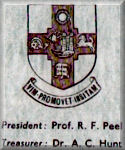

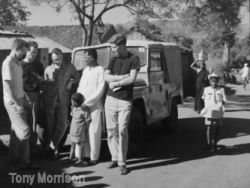
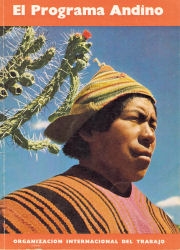
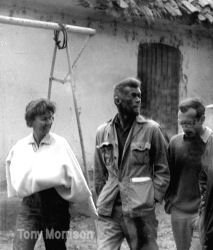
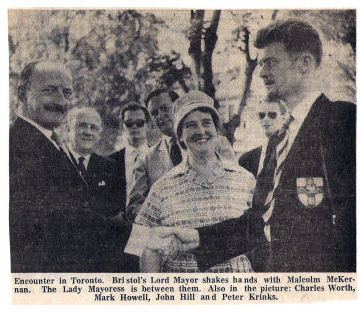 We
left Colombia for the USA and Canada on a cargo flight to Miami - the story is
in
We
left Colombia for the USA and Canada on a cargo flight to Miami - the story is
in